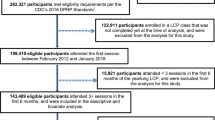Abstract
Increasing reliance upon direct-to-consumer advertising (DTCA) to promote prescription medications has intensified debate about advertising effects on patients and the educational merits of the advertisements. This research investigates, from the consumers’ point of view, the capacity of drug advertising to educate. We conducted focus groups to examine consumers’ drug information needs as well as their perceptions of DTCA’s usefulness and quality. Information needs reported by participants included drug purpose, risks, benefits, cost information, and treatment options. Participants felt DTCA raised awareness but provided limited information about the benefits, harms, and uses of specific drugs. Perceived limitations of DTC advertisements include garbled messages, poor formats, and sparse details about clinical research, costs, and comparative therapies. Findings indicate drug advertisements may not serve to educate consumers in the way DTCA proponents contend. The educational value of DTCA could be improved by requiring advertisements to provide specific drug and medical condition information in a format easily understood by lay audiences.
Similar content being viewed by others
References
Curran CF, Oh KE. Sources of drug information available to consumers. Drug inf J. 2001;35:539–546.
Rosenthal MB, Berndt ER, Donohue JM, Frank RG, Epstein AM. Promotion of prescription drug to consumers. N Engl J Med. 2002;346(7):498–505.
Bradley LR, Zito JM. Direct-to-consumer prescription drug advertising. Med Care. 1997;35:86–92.
Christensen TP, Ascione FJ, Bagozzi RP. Understanding how elderly patients process drug information: A test of a theory of information processing. Pharm Res. 1997;14:1589–1596.
Hollon MF, Larson EB, Koepsell TD, Downer AE. Direct-to-consumer marketing of osteoporosis drugs and bone densitometry. Ann Pharmacother. 2003;37(7–8):976–981.
Cohen EP. Direct-to-public advertisement of prescription drugs [Letter to the editor]. N Engl J Med. 1988;318:373–375.
Prescription drug advertising direct to the consumer. Pediatrics. 1991;88(1):174–175.
Griffith WA, Cangemi RR. Direct-to-consumer rx ads? Drug firms see plusses, minuses. Drug Topics. 1985;129:60–62.
Alperstein NM, Peyrot M. Consumer awareness of prescription drug advertising. J Advertising Res. 1993;33:50–56.
The Henry J, Kaiser Family Foundation. Understanding the effects of direct-to-consumer prescription drug advertising. November 2001. Available at: http://www.kff.org/rxdrugs/loader.cfm?url=/commonspot/security/getfile.cfm&PagelD=13876. Accessed January 9, 2004.
Bell RA, Kravitz RL, Wilkes MS. Direct-to-consumer prescription drug advertising and the public. J. Gen Int Med. 1999;14:651–657.
Cline RJW, Young HN. Marketing drugs, marketing health care relationships: A content analysis of visual cues in direct-to-consunter prescription drug advertising. Health Commun. 2004;16(2):131–57.
Hollon MF. Direct-to-consumer marketing of prescription drugs: Creating consumer demand. JAMA. 1999;281:382–384.
U.S. Department of Health and Human Services: Food and Drug Administration. Guidance for Industry—Brief Summary: Disclosing Risk Information in Consumer-Directed Print Advertisements. January 2004. Available at: http://www.fda.gov/cder/guidance/5669dft.pdf. Accessed July 6, 2004.
Doucette WR, Schommer JC. Consumer preferences for drug information after direct-to-consumer advertising. Drug Inf J. 1998;32:1081–1088.
Author information
Authors and Affiliations
Corresponding author
About this article
Cite this article
Young, H.N., Paterniti, D.A., Bell, R.A. et al. Do Prescription Drug Advertisements Educate the Public? The Consumer Answers. Ther Innov Regul Sci 39, 25–33 (2005). https://doi.org/10.1177/009286150503900104
Published:
Issue Date:
DOI: https://doi.org/10.1177/009286150503900104




